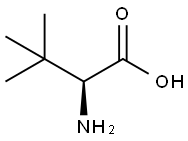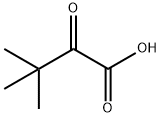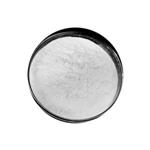Description
L-tert-Leucine is an essential amino acid making up one third of our muscle protein. L-tert-leucine is important in developing chiral pharmaceutically active chemicals. It can be used as a food additive. It is used in the formation of sterols. It can also be used as the catalyst in the production of cobalt oxazoline palladacycles complex. It can also be used for the production of Chiral tridentate Schiff base ligands.
References
Korkmaz, Neslihan, D. Astley, and S. T. Astley. "Tridentate ligands derived from L-tert-Leucine for the Cu(II) mediated asymmetric Henry reaction." Turkish Journal of Chemistry 35.3(2011):1-17.
https://www.alfa.com/en/catalog/L13707/
http://igem.org/abstract_pdf_file.cgi?id=1719[1] Weiming Liu . “Efficient synthesis of l-tert-leucine through reductive amination using leucine dehydrogenase and formate dehydrogenase coexpressed in recombinant E. coli.” Biochemical Engineering Journal 91 (2014): Pages 204-209.
[2] Wei Luo. “Cloning and Expression of a Novel Leucine Dehydrogenase: Characterization and L-tert-Leucine Production.” Frontiers in Bioengineering and Biotechnology (2020): 186.
[3] Longxing Wang. “Biosynthetic L-tert-leucine using Escherichia coli co-expressing a novel NADH-dependent leucine dehydrogenase and a formate dehydrogenase.” Electronic Journal of Biotechnology 47 (2020): Pages 83-88.
Chemical Properties
White to almost white powder
Uses
L-tert-Leucine is an essential amino acid and makes up one third of our muscle protein. It can be used as a food additive. It is used in the formation of sterols. It is used in the production of cobalt oxazoline palladacycles complex, which acts as a catalyst in the rearrangement of prochiral N-aryl trifluoroacetimidates to allylic amides yielded in significantly higher enantioselectivities with the (S)-(pR)-diasteroisomer.
Production Methods
The synthesis method of L-tert-Leucine (L-Tle) includes chemical and biological methods. Compared with traditional chemical synthesis, the enzymatic reduction of chiral keto acid to synthesize the corresponding unnatural amino acid has the advantages of high optical purity, mild reaction conditions, high conversion rate, and environmental friendliness. Currently, enzymatic methods have gradually replaced chemical methods. Some previous research on preparing L-tert-leucine using hydrolase, acyltransferase, and amino acid dehydrogenase has been reported. Among them, the preparation of L-tert-leucine using NADH-dependent L-leucine dehydrogenase (LeuDH, EC 1.4.1.9) has exhibited the most industrial potential. In the presence of NADH and free ammonium, LeuDH can catalyze trimethylpyruvate (TMP) to L-tert-leucine[1-3].
General Description
L-tert-Leucine (L-Tle) is an essential non-natural amino acid often used as a template to induce asymmetric synthesis, and the product has high stereoselectivity. It is a non-polar amino acid, and its tert-butyl group has significant hydrophobicity and steric hindrance, which can control molecular conformation in a chemical reaction and form a chiral compound. Hence, L-tert-leucine is commonly used as an inducer or a template in asymmetric synthesis. As a vital chiral intermediate, L-tert-leucine is widely used to synthesise anti-cancer, anti-viral, and biological inhibitors. In addition, L-tert-leucine is an essential additive in the food and cosmetic industry[1].
reaction suitability
reaction type: solution phase peptide synthesis





